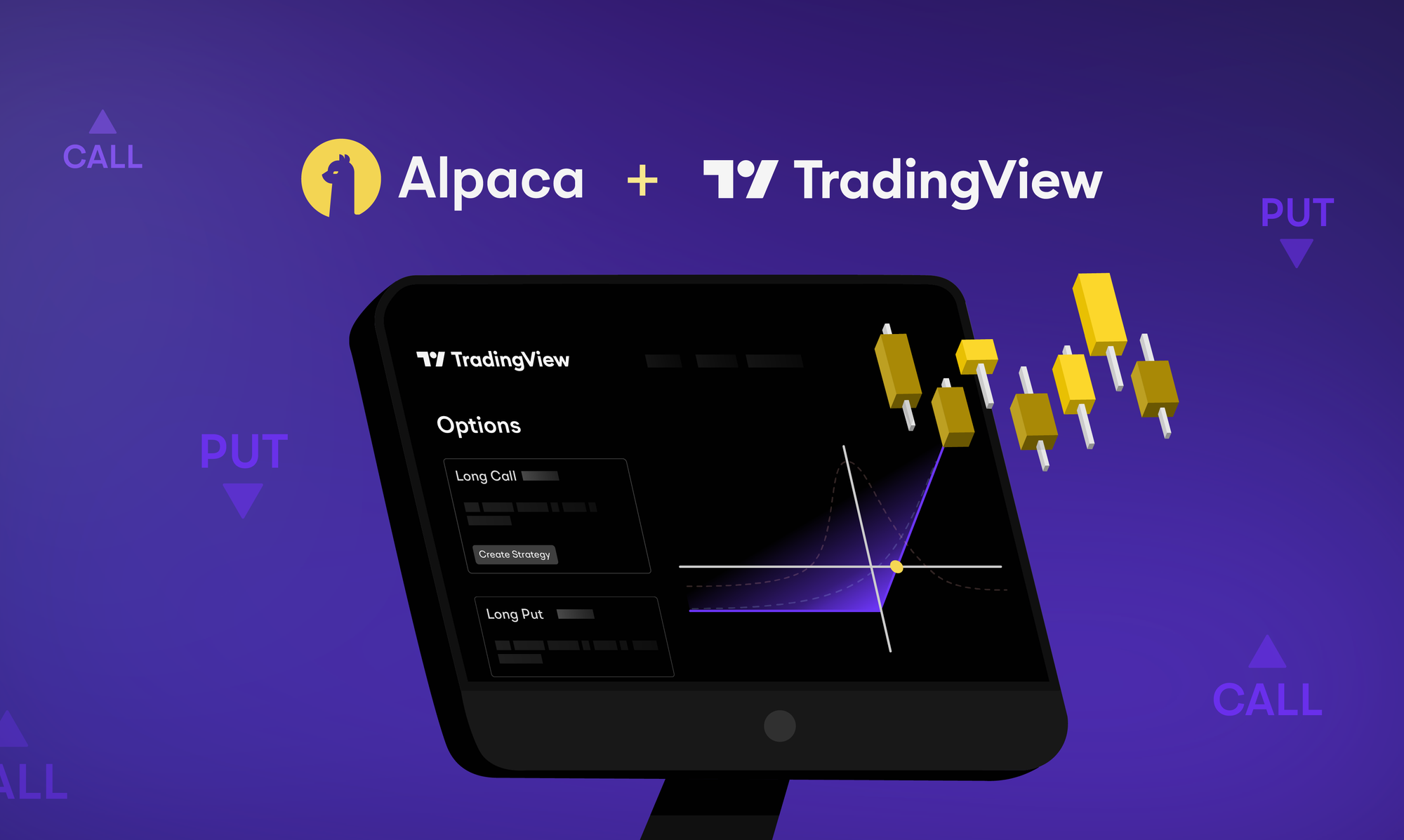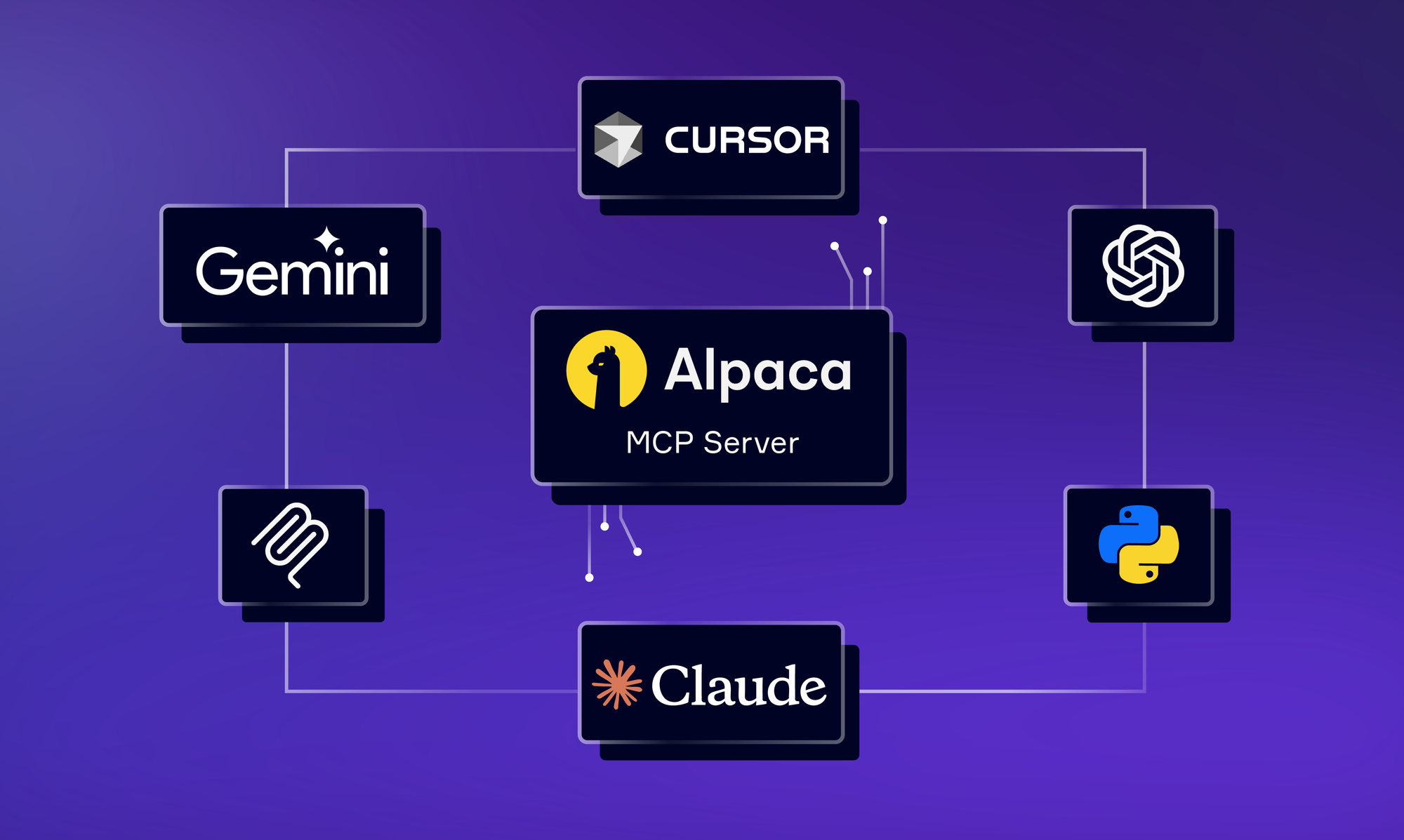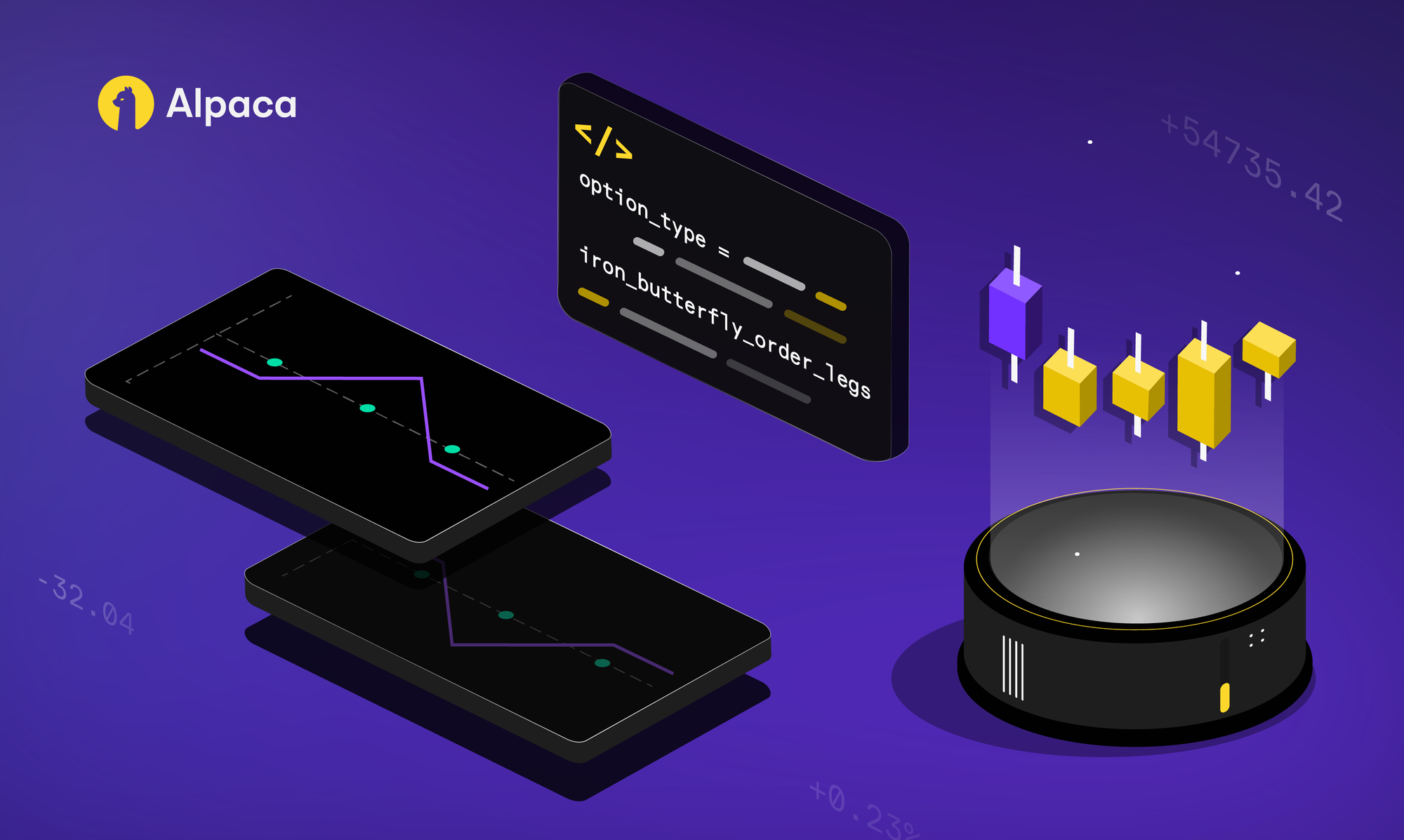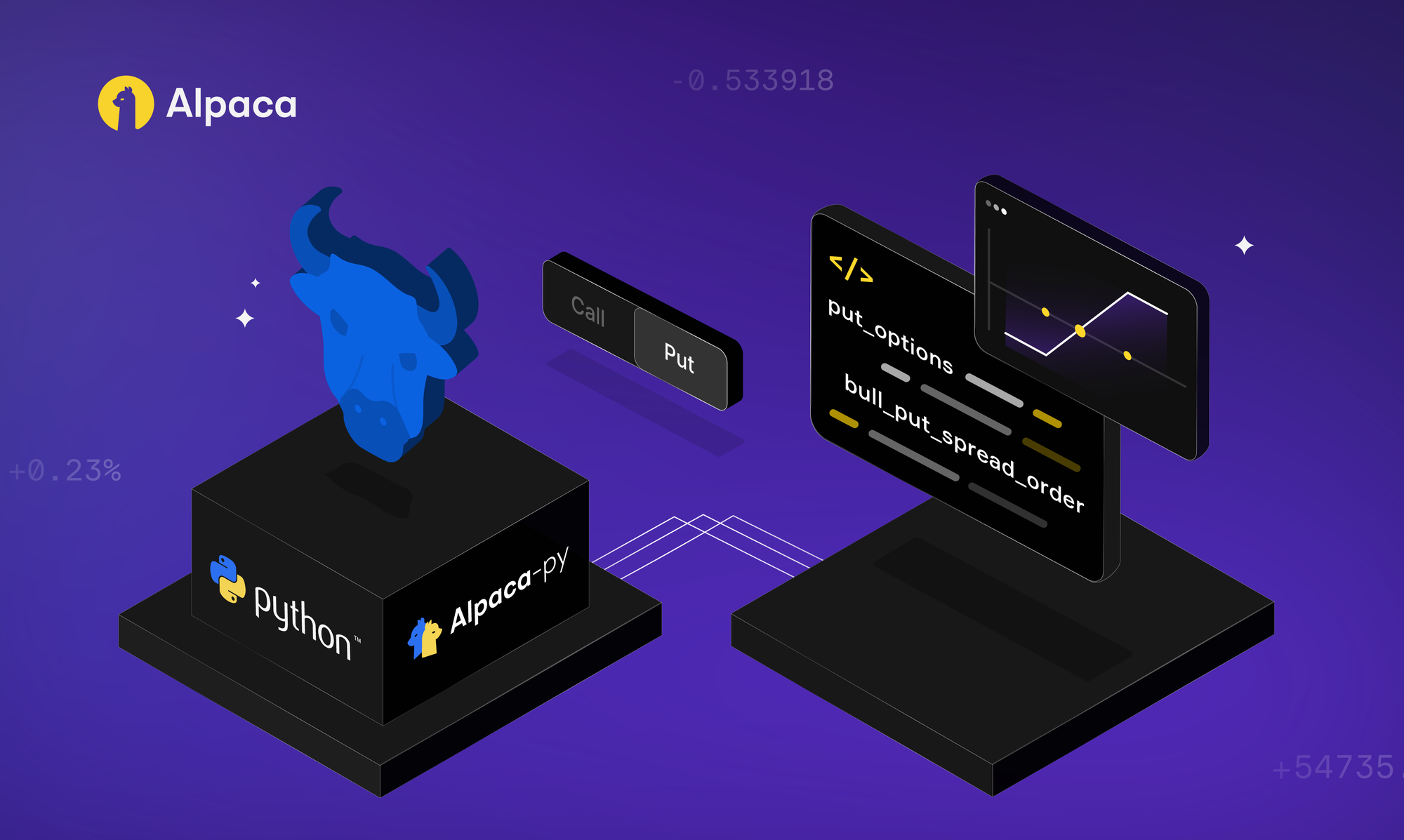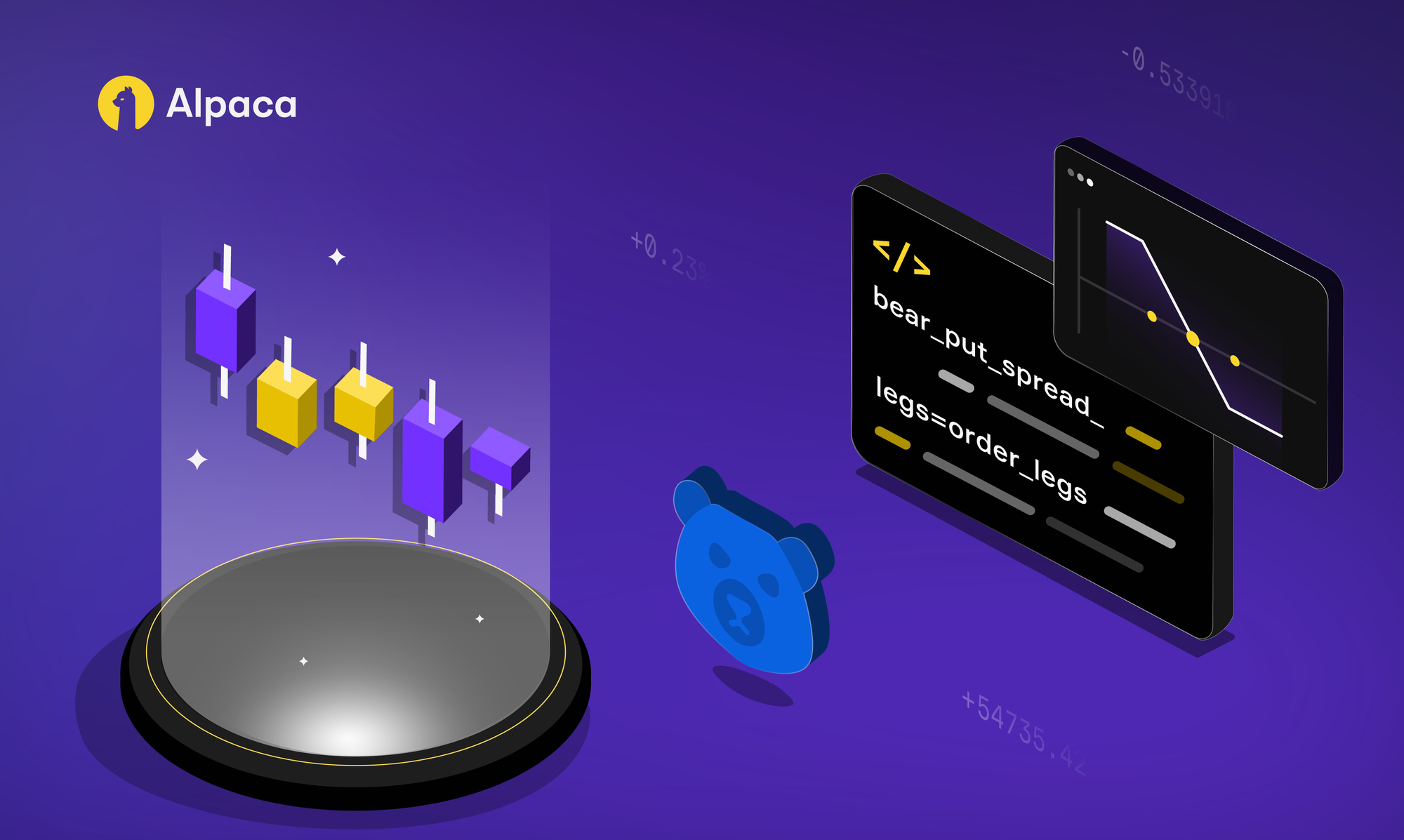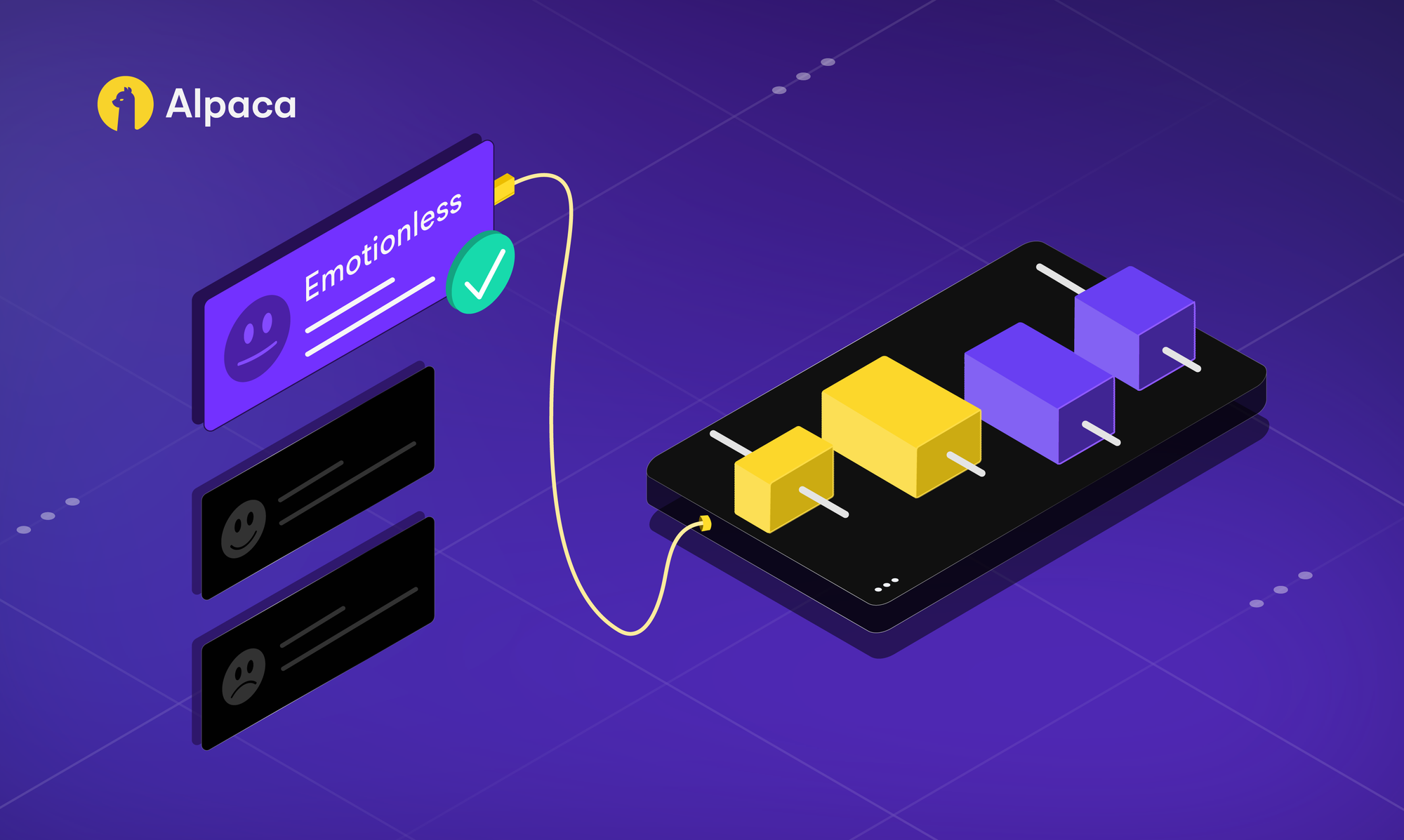
Trading, and especially options trading, can bring an overwhelming sense of emotions. The inherent up-and-down nature of the market can trigger emotional responses no matter how much capital is risked. While taking a rational approach is helpful for successful trading, fear, greed, and even overconfidence can lead to impulsive decisions that deviate from well-defined strategies, potentially resulting in losses that could have been avoided.
That’s why implementing emotionless options trading can be a valuable approach. This guide will examine the role of emotions in options trading, the potential advantages of emotionless strategies, and the critical role of paper trading, backtesting, and risk management in helping you build an “emotionless” system.
To get the most out of this guide, explore the following resources first:
What is Emotionless Option Trading?
Emotionless option trading refers to a disciplined approach to trading that minimizes the impact of human biases. It achieves this by relying on logic, data, and pre-defined rules. Having a systematic approach to options trading, and trading in general, is essential. Without a defined plan, traders are more susceptible to emotional biases, making it difficult to consistently execute strategies and manage risk effectively.
While the concept of rational trading has been around for a while, "emotionless" trading gained steam with the rise of algorithmic trading and sophisticated trading platforms. And as technology advances, it becomes increasingly more feasible to automate trading processes, removing the human element and its inherent emotional biases as much as possible.
By removing the emotional element, traders may achieve more consistent results and avoid the pitfalls of impulsive decision-making. This approach is particularly relevant for developers and algorithmic traders who can leverage technology to create and execute strategies with precision and discipline. While human input remains crucial in strategy development and system design, the execution itself can be delegated to the system, promoting a more objective and controlled trading environment.
The Role of Emotions in Trading
Emotions, if you let them, can play a powerful role in trading. However, it’s not always to the benefit of your trades. There are several psychological traps that can impact judgment and lead to poor outcomes.
Fear of Missing Out (FOMO)
Seeing others profit from a particular trade can trigger a fear of being left behind, prompting traders to jump into positions without proper analysis or a well-defined strategy. This can lead to impulsive decisions and increased risk exposure.
Overtrading
Driven by the emotional urge to "do something" when the market is active, overtrading is another common problem. Traders might feel compelled to constantly enter and exit positions, even when there's no clear strategic advantage, leading to increased transaction costs and potential losses.
Loss Aversion
The tendency to feel the pain of a loss more strongly than the pleasure of an equivalent gain can also distort trading decisions. Traders might hold onto losing positions for too long, hoping for a turnaround, rather than cutting their losses and preserving capital. Conversely, they may sell winning positions prematurely to lock in small gains, missing out on potential further profits.
Greed
The desire for quick profits can lead traders to take excessive risks, chasing high-return but low-probability trades. This can result in significant losses if the market moves against them.
Impatience and Overconfidence
Building up a few successful trades can create a false sense of mastery, causing traders to become impatient and take on more risk than they can handle. They may skip due diligence and risk management procedures, increasing their vulnerability to market downturns.
Hindsight and Recency Bias
Traders might give undue weight to recent events or news, letting them disproportionately influence their decisions, while ignoring long-term trends and historical data. They might also become anchored to certain price levels, making it difficult to objectively assess the current market situation.
Hope
Many traders, especially new traders, want to believe that they will make a trade that changes their lives forever. However, this hope can keep them from selling off assets on a downward trend, rather than cutting their losses, or holding on to a trade too long, rather than celebrating the small victories.
The Benefits of Emotionless Trading
Emotionless trading, by minimizing the influence of these emotional biases, offers several potential benefits.
Improved Consistency
By adhering to pre-defined rules and strategies, traders can execute trades with greater discipline, avoiding the impulsive deviations that often arise from emotional reactions. This consistency can lead to more predictable outcomes and a more stable trading performance.
Better Risk Management
Emotionless trading allows for the implementation of strict stop-loss orders and position sizing rules, ensuring that losses are limited and controlled. This disciplined approach to risk management can protect capital and prevent significant drawdowns.
Reduced Stress
Trading can be exhausting and stressful, impacting both mental and physical well-being. By removing the emotional component, traders can experience a greater sense of calm and control, allowing them to focus on the strategic aspects of trading.
Fewer Impulsive Decisions
By relying on logic and data, traders are less likely to make rash decisions based on fear or greed, leading to a more considered approach to market participation. This, in turn, can contribute to a greater focus on long-term goals. By avoiding short-term emotional reactions, traders can stay focused on their overall investment objectives and make decisions aligned with their long-term strategy.
Eliminating Cognitive Biases
Being emotionless in trading promotes increased objectivity in trade execution. Traders can minimize the impact of personal biases and subjective interpretations, leading to more objective and data-driven decisions.
Tips and Techniques for an Emotionless Trading System
Creating a trading system requires careful planning, the right tools, and an understanding of market dynamics. This section explores practical tips and techniques for developing and implementing such a system, whether you're a manual or algorithmic trader.
Create A Trading Plan That Works for You
A well-defined trading plan is the cornerstone of emotionless trading. It serves as your roadmap, guiding your decisions and preventing emotional impulses from derailing your strategy.
Algorithmic Trading vs Manual Trading
Manual trading involves making decisions and executing trades yourself, while algorithmic trading utilizes automated systems to execute pre-programmed strategies. Your choice will influence the tools and techniques you employ. Generally speaking, it is easier to be emotionless when algorithmic trading than manual trading as algo trading often relies on technical indicators while manual trading relies more on human discipline.
Understand Your Risk Tolerance and Have an Exit Strategy
When entering a trade, it’s important to have a goal or expectation in mind. You should have a plan of what you’re trying to achieve with the trade and how much you’re willing to profit or lose. Having clear entry and exit plans will help determine your position sizing and the types of strategies you employ. Setting a budget and sticking to it will help you manage risk and avoid overleveraging.
Focus on the Process, Not Profit
Experienced traders understand that profitability often is a result of executing a well-defined strategy. They focus on adhering to their plan, managing risk, and refining their approach, rather than obsessing over short-term outcomes.
Pick the Right Trading Tools
When you’re picking a trading platform, it’s important to prioritize tools that have comprehensive and easy-to-use features. For manual trading, this often means great Graphical User Interfaces (GUIs) and user experiences. For algo trading, it means using APIs that have backtesting capabilities, paper trading environments, robust historical data access, and documentation, and are compatible with real-time stocks tickers, customizable alerts, and a wide range of technical indicators.
Whether you’re looking to trade options manually or algorithmically, Alpaca offers a comprehensive suite of tools for both new and experienced traders. Learn how to start trading options through our dashboard or API.
The Role of Historical Data in Emotionless Trading
Leveraging historical data is a key part of emotionless trading. It provides information about past market behavior, allowing traders to identify patterns, simulate trades, test strategies, and build and refine robust trading systems. By analyzing past market movements, traders can identify potential entry and exit points, assess risk levels, and optimize their trading parameters.
Key data points for traders include historical prices of underlying assets, strike prices, and implied volatility. Access to option chains, Greeks, and expiration dates is also crucial for options trading. By analyzing how markets reacted to past events, traders can better anticipate potential future market responses and adjust their strategies accordingly.
Keep a Journal
Track your wins and losses, as well as the emotions that come with each. This will help you determine your response to each outcome, create a helpful way to process your emotions, as well as provide insight as to where you could improve in the future. Plus, it becomes a helpful resource for referencing back to what your initial emotions were when building the strategy, allowing you to be more clear minded if things change.
How Algo Trading Can Help Remove Emotions
As mentioned, emotions like fear, greed, and overconfidence can cloud judgment, leading to impulsive actions that deviate from well-defined strategies. Developing a trading strategy with algorithms often involves defining a set of rules and variables that dictate when to enter and exit trades.
This is a significant advantage in the fast-paced world of options trading, where split-second decisions can have a substantial impact on outcomes. Algorithmic trading eliminates emotions from the immediate decision-making process, allowing traders to stick to their strategies and manage risk more effectively.
Leveraging Indicators and Models
There are several theories and models used in options trading, including mean-reversion, momentum-based, and statistical arbitrage strategies. Technical indicators also play a crucial role in algorithmic trading.
Moving Averages (like SMA, EMA) can be used for trend identification, while Bollinger Bands can provide insights into volatility and potential entry/exit signals. The Relative Strength Index (RSI) can help identify momentum and overbought/oversold conditions. Implied Volatility and the VIX are essential for options pricing.
Algo traders can create custom indicators tailored to their specific strategies. For instance, they might combine several indicators to create a composite signal that triggers trades. Integrating these technical indicators into algorithmic frameworks involves translating the indicator logic into code that the trading platform can understand and execute. You can see how we incorporate many of these indicators in Python in many of our options strategy tutorials.
Risk Management Rules
Algorithmic trading allows for the integration of risk management directly into the trading system. This ensures that emotional decisions, such as cutting losses too early or holding onto losing positions for too long, are avoided.
Position sizing, stop-loss orders, and take-profit orders can be incorporated into algorithms to protect traders from unnecessary risk. Continuous monitoring and optimization are essential for maintaining the effectiveness of a trading algorithm, especially when adapting to the constantly changing market conditions.
Alerts: Automating Monitoring to Prevent Emotional Trading
Alerts are essential for trading as they reduce the need for constant screen watching, preventing overtrading and impulsive reactions to market fluctuations. Traders can use price alerts, volatility alerts, and news event alerts to stay informed about market movements without being glued to their screens.
Alerts can also be set based on technical indicators or price action. For example, an alert could be triggered when a stock's price crosses a specific moving average. Automating alerts within your trading algorithm can prompt trade execution when key conditions are met, further minimizing emotional interference. Risk management alerts can also be set up to prevent large drawdowns.
Paper Trading: Testing Strategies in Real-Time Without Real Money
Paper trading simulates live trading without risking real capital. It's beneficial for both beginners and experienced traders, providing a risk-free environment to test and refine strategies. Paper trading allows traders to experience the real-time market environment without the emotional rollercoaster of real money.
This can be especially helpful for testing options strategies, which can be complex and volatile. It allows traders to focus on the process of executing their strategies, rather than being driven by the fear of loss or the greed for quick profits. Paper trading may be used to build confidence before transitioning to live trading.
It's important to set realistic expectations and understand risk management principles before risking real money. Several APIs, like those offered by Polygon, TradingView, and QuantConnect, can be connected with Alpaca’s Trading API for paper trading.
Backtesting: Simulating Real-World Scenarios Without Risk
Backtesting is an important step in developing any trading system. It involves simulating real-world market scenarios using historical data to evaluate the performance of a trading strategy. Through backtesting, traders can work to eliminate emotional responses by providing objective data on how a strategy would have performed in the past.
Setting up a backtest for options trading involves choosing the right parameters, such as strike price and expiration dates. Performance is evaluated using metrics like the Sharpe Ratio, maximum drawdown, and win rate. It's also crucial to avoid common pitfalls in backtesting, such as overfitting, data snooping, and survivorship bias.
Overfitting
Occurs when a trading strategy is excessively tailored to historical data, leading to poor performance in live markets. This happens because the strategy becomes too specific to the nuances of the past data and fails to adapt to new, unseen market conditions. In essence, the strategy learns the noise in the historical data rather than the underlying patterns.
Data Snooping
Involves unconsciously incorporating knowledge of future market movements into the backtest. For example, if a trader sees that a strategy would have failed at a certain point in the past, they might unconsciously adjust the strategy to avoid that failure in the backtest. This can lead to overly optimistic backtesting results that don't reflect how the strategy would perform in live trading.
Survivorship Bias
This occurs when a backtest only includes data from companies or assets that have survived and are still trading. It excludes data from companies that failed or were delisted. This can lead to an overestimation of a strategy's performance because it doesn't account for the losses that would have occurred from investing in the failed companies. Survivorship bias can make a strategy appear more successful than it actually is.
Conclusion: Why Emotionless Option Trading is the Future
Emotionless options trading represents a significant advancement in market participation, offering developers, algorithmic traders, and quantitative analysts a powerful approach to navigating the complexities of the options market. By minimizing the influence of emotional biases, emotionless trading promotes consistency, improves risk management, and fosters a more disciplined approach to trading. We've explored the psychological traps that can hinder trading success, the benefits of removing emotions from the equation, and practical tips for building and implementing emotionless trading systems.
We encourage all traders, regardless of experience level, to begin their journey in paper trading. This risk-free setting allows you to test and refine your strategies, familiarize yourself with trading platforms and APIs, and develop the discipline necessary for successful trading, all without risking your capital.
Remember that a systematic approach, combined with rigorous backtesting and robust risk management, is the cornerstone of successful options trading. By embracing these principles, you can increase your chances of achieving your trading goals and navigating the market with greater confidence and control. The future of options trading lies in data-driven, emotionless strategies, and by adopting these techniques, you can position yourself for success in this dynamic and challenging market.
Interested in learning how to trade options? Start with Alpaca today! As you put these concepts into practice, feel free to share your feedback and experiences on our forum, Slack community, or subreddit! And don’t forget to check out the rest of our options-related tutorials.
Frequently Asked Questions
Is it possible to trade without emotions?
While completely eliminating emotions from trading is difficult, the goal of algorithmic trading is to minimize their impact on decision-making. By implementing systematic strategies, using objective data, and automating trade execution, traders can significantly reduce the influence of fear, greed, and other emotions.
Is it possible to profit on every trade?
No, it's not possible to profit on every trade. Losses are an inherent part of trading. That’s why it’s important for traders to learn how to manage risk effectively. Algo trading can help build systems that attempt to limit losses and make winning trades outweigh losing trades over the long term. Focusing on a well-defined strategy and consistent execution is more important than trying to achieve a perfect win rate.
Are there any benefits to emotionless investing?
Yes, there are several benefits to emotionless investing. It may lead to more consistent returns, better risk management, reduced stress, and improved mental clarity. By removing emotional biases, investors can make more rational decisions, avoid impulsive actions, and stay focused on their long-term investment goals.
Can you be emotionless in manual trading or only in algo trading?
While algorithmic trading offers a more structured approach to minimizing emotional influence, it's possible to cultivate a more emotionless mindset in manual trading as well. This involves developing a strict trading plan, setting clear entry and exit rules, and practicing discipline. However, even with diligent effort, manual trading is more susceptible to emotional biases than algorithmic trading.
What should be considered when choosing an emotionless trading platform?
When choosing a platform for emotionless trading, consider the following factors:
- Backtesting capabilities: The platform should allow you to test your strategies on historical data.
- Paper trading environment: A paper trading feature lets you simulate live trading without risking real money.
- API access: If you plan to use algorithmic trading, ensure the platform offers a robust API.
- Data availability: Access to comprehensive historical data, including options data, is crucial.
- Customization: The platform should allow you to create custom indicators and alerts.
- Reliability and security: Choose a platform that is reliable and secure to protect your capital and data.
Options trading is not suitable for all investors due to its inherent high risk, which can potentially result in significant losses. Please read Characteristics and Risks of Standardized Options before investing in options.
The Paper Trading API is offered by AlpacaDB, Inc. and does not require real money or permit a user to transact in real securities in the market. Providing use of the Paper Trading API is not an offer or solicitation to buy or sell securities, securities derivative or futures products of any kind, or any type of trading or investment advice, recommendation or strategy, given or in any manner endorsed by AlpacaDB, Inc. or any AlpacaDB, Inc. affiliate and the information made available through the Paper Trading API is not an offer or solicitation of any kind in any jurisdiction where AlpacaDB, Inc. or any AlpacaDB, Inc. affiliate (collectively, “Alpaca”) is not authorized to do business.
Past hypothetical backtest results do not guarantee future returns, and actual results may vary from the analysis.
Please note that this article is for general informational purposes only and is believed to be accurate as of the posting date but may be subject to change.
Securities brokerage services are provided by Alpaca Securities LLC ("Alpaca Securities"), member FINRA/SIPC, a wholly-owned subsidiary of AlpacaDB, Inc. Technology and services are offered by AlpacaDB, Inc.
This is not an offer, solicitation of an offer, or advice to buy or sell securities or open a brokerage account in any jurisdiction where Alpaca Securities are not registered or licensed, as applicable.

